#Revit 4D Simulation
Text
Top 5 Trends Reshaping the Process of Building Information Modeling
In the recent scenario, BIM- Building Information Modeling has started to develop as a more great alternative to 3D CAD modeling. The process enables teams particularly on huge projects to work collectively in building a whole, digital design of a building before the first stone sets.
Engineers, Architects, structural designers, and many of other stakeholders in the process can take advantage of, and collaborate on, the same method to develop a comprehensive design of your building-to-be. The complete building information model then operates as the blueprint for anyone engaged in delivering the project from an idea to its completion.

Past research has bestowed the success of BIM across the AEC industry.
To remain successful, BIM depends on leveraging current technology to model the project. Because that technology continues to include, the process already seems very different now than it did a few years ago. And Of course, as you plan, design, and develop your project, you must be aware of certain trends to establish the best model possible.
Here are 5 trends, which will only extend to rise in importance as they enter and grow the AEC outlining process.
1) 3D Printing
A few years ago, 3D Printing was just a curiosity, especially for Small AEC firms. Today, it’s a progressively affordable opportunity to intensify your design and modeling with a real representation of the digital ideas.
Globally, Forbes demands the 3D printing market to expand to more than $12 billion by this year, i.e., 2018. The same Forbes announced the single most significant industry use case to be prototyping, making it a perfect fit for the real representation of a BIM outline.
Thus, at its core, BIM is virtual. It enables a complete view of a building project, but it needs to conceptually digital. Uniting 3D printing abilities to that model provides companies to produce that practical idea into reality.
2) Prefabrication
Prefabrication is a core benefit of Building Information Modeling (BIM), as discussed above, is its comprehensive nature. In addition to contributing engineers, architects, and construction professionals with the necessary building materials required to recognize a concept.
That comprehensive nature, while follows BIM perfectly with different construction trend: prefabrication. In the matter of lowering costs and increasing the speed of construction, both individuals and companies are frequently turning toward modular, prefabricated options. Throughout the world, the ready-made (prefabricated ) housing market is evolving fast, and the same continues right in the commercial space.
Hence, utilizing BIM systems, AEC firms can use prefabrication more efficiently and successfully. Eliminating waste from processes has long been a directing principle of active organizations, and prefabrication optimized by BIM can succeed just that. Its accurate modeling abilities enable companies to construct building components without the required on-site confirmations.
3) Mobile Accessibility
Expanding mobile internet usage is not a phenomenon confined to AEC industry. But rapidly, it’s proceeding and making its impression in the AEC industry as well. Expecting any digital solutions to be transferable enough to satisfy its users and their needs.
A comprehensive BIM model on which engineers, architects, and the construction experts work and are all connected will require to be accessible from multiple locations. Ideally, that accessibility should be transferable, supporting to record and perform improvements even on the construction site or from a conference/meeting room.
Nowadays Some BIM software can pass that capability. With the help of cloud and mobile features, BIM models can more efficiently be shared with the stakeholders and also can access it from any endpoint required. Thus, the results are increasing and the user-friendliness that in turn maximizes productivity and collaboration on the project.
In the future, the trend of mobile accessibility will only be expanding its Importance. Architects will not stop designing their initial ideas on office desktops. Engineers will extend to compile necessary calculations from their desk itself. However, BIM proceeds to matter beyond project fulfillment, as it associates to maintenance and small updates. In achieving each goal, mobile accessibility is a vital key.
4) Green Buildings
Several AEC expert knows about the continued and still-growing necessity of Green Construction. Certifications like LEED gives plenty of advantages, from tax expense deductions to many marketing opportunities. These also motivates companies of all the industries to demand green buildings as part of their construction project.
Designing and constructing sustainably, depends on several factors. Steadily BIM- Building Information Modeling can identify these factors and streamline the design and construction process to increased its impact.
Hence, BIM, in other words, is remarkably beneficial and essential to design and develop green construction.
5) Government Regulations
Governments across the world is already rising to understand the potential and capabilities of BIM. As a result, they are beginning to explore it for public projects, in some cases even expecting BIM models for any construction and infrastructure project.
At its core, BIM is in itself a significant trend within the AEC industry. 2D models of idea visualizations and projects are growing less desirable. And also, 3D CAD modeling may not hold the full advantages that Building Information Modeling (BIM) produces. As a result, projects as important as significant infrastructure developments and as comfortable as existing building maintenance are taking benefits of BIM.
Simultaneously, the effectiveness of doing so can maximize if AEC experts understand and leverage the above trends currently developing the present and future of the concept. Like 3D printing, mobile accessibility, and the other trends has begun to shape the future of the BIM. Working with an organization that can leverage the advantages of BIM to its fullest is vital.
Visit Us : https://nibt.education/
Contact Us : +91 73502 55855
#BIM Training Online#Online BIM Training#BIM Courses Online#BIM Online Course#Revit Electrical Training#Revit 4D Simulation
0 notes
Photo
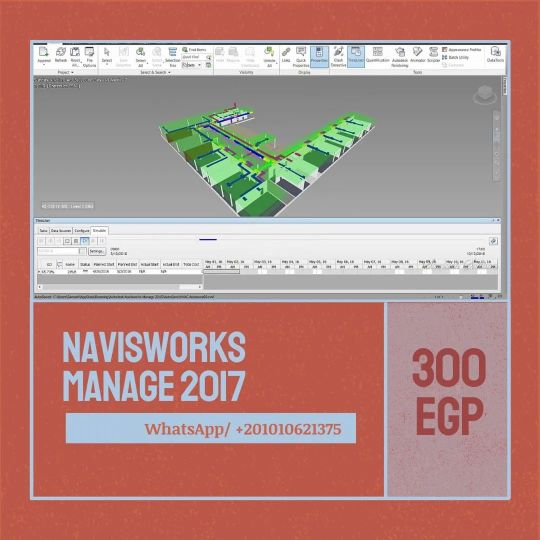
#تعلم_بالعربية «#نافسووركس» https://easy2learn.teachable.com/p/learning-navisworks-2017 #easy2learn #eLearningCourses #bim #4D #navisworks #revit #AutoCAD #simulation #projectmanagement #scheduling https://www.instagram.com/p/CmVqitIIpGO/?igshid=NGJjMDIxMWI=
#تعلم_بالعربية#نافسووركس#easy2learn#elearningcourses#bim#4d#navisworks#revit#autocad#simulation#projectmanagement#scheduling
0 notes
Text
How BIM Can Help in Error-Free Construction Processes
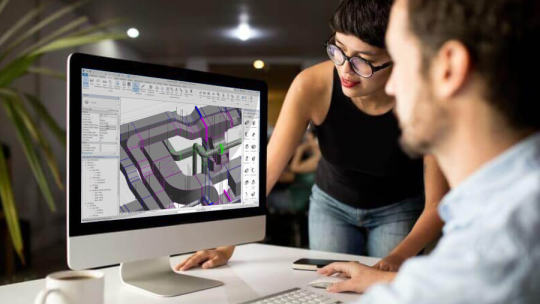
A construction project involves hundreds of tasks, and a general project overview will not be enough to identify potential risks. However, the use of BIM allows for task-by-task risk assessments and the preparation of safety procedures. Here are a few examples of how BIM can benefit the construction process. They include Construction monitoring using BIM, and simulation of construction processes in 4D, and 4D BIM.
BIM for the construction process
Using BIM for error-free construction processes guarantees a better outcome for the construction process. It streamlines communication and collaboration among AEC professionals and drives information exchange. The advantages of BIM are numerous. These include a faster, more collaborative process, a better quality of construction, and reduced costs. In addition, BIM can help make the construction process safer. Read on to find out more about the benefits of using BIM.
A coordinated 3D BIM model can be produced by parametric software like Revit, and clash-checked using a tool like Navisworks. This coordinates the model with the MEP layout and reduces errors. By reducing field rework, it also allows for better cost estimation and accurate scheduling. The process can take seven to ten days. However, the benefits of using BIM are worth it.
4D BIM for construction simulation
The application of 4D BIM has many benefits, from better coordination of schedules and materials to improved training and safety by design. It also offers a visual representation of the entire project, which helps stakeholders see how their project will look during the building process. Furthermore, 4D BIM Modeling also saves time and money on construction projects by allowing stakeholders to view the project in real-time. In fact, it has been used in the construction of a new student dorm in the Middle East.
It also allows for risk mitigation and redistribution of assets. The ability to see every detail of a project in 4D reduces the risks associated with construction. With the ability to precisely pinpoint every imprecise square foot, 4D modeling helps in tracking required design changes. Furthermore, it helps to avoid clashes in a construction site, which helps in reducing construction risks and improving coordination between various project teams.
Construction Monitoring using BIM
Many benefits of BIM can be found in the field of Construction Monitoring. BIM is particularly suitable for safety-conscious construction companies that seek to complete similar projects time again. It helps ensure that projects are completed safely and efficiently, reducing cost variability and increasing project turnaround times. The Occupational Safety and Health Administration (OSHA) has put together a lengthy list of safety standards for the construction industry. By using BIM for construction projects, these standards can be met, guaranteeing better outcomes.
The adoption of BIM can also be beneficial to pre-existing buildings. The technology is used to restore an old medical center while adding a new wing to the existing structure. The contractor used BIM to achieve LEED Silver certification, an industry standard for green construction. This certification requires contractors to consider the impact of their work on the environment and incorporate sustainable solutions into their projects. This is just one example of how BIM can benefit a pre-existing building.
#BIM#Construction#Building Design#architecture#building information modeling#4D BIM#Construction Simulation#Construction Scheduling#Architectural#Structural#MEP#AutoCAD#Revit#Autodesk#Navisworks#Synchro 4D#buildings
1 note
·
View note
Text
Best Building Information Modeling Services London, UK at an Affordable Price
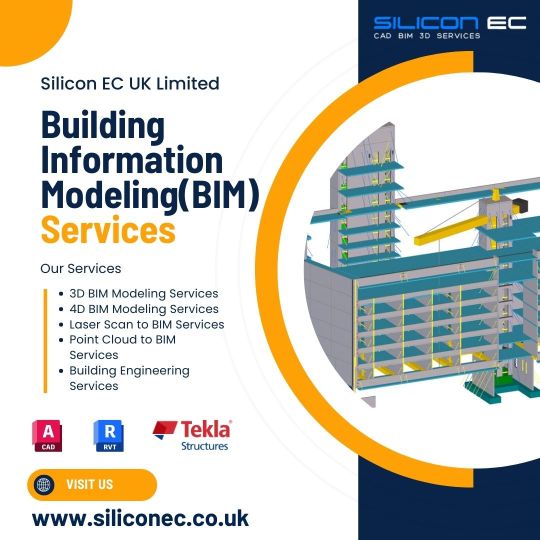
Silicon EC UK Limited is a leading provider of Building Information Modeling (BIM) Services, offering unique and innovative solutions. Our BIM Services encompass a wide range of capabilities, tailored to meet the specific needs of our clients. Our comprehensive range of BIM Design Services includes 3D BIM Modeling, Clash Detection and Coordination Services, 4D and 5D BIM simulations, facility management, Laser Scanning, and BIM Coordination Services. With our expertise and advanced tools, we enable seamless collaboration, accurate cost estimation, and improved project outcomes. Our expertise extends to various sectors, including residential, commercial, industrial, healthcare, and infrastructure projects. Our BIM Modeling Company offers Revit BIM Modeling Services all over the Kingdom of Great Britain.
Our Building Information Modeling Services Include:
- 3D BIM Modeling Services
- Clash Detection and Coordination Services
- Laser Scan to BIM Services
- Point Cloud to BIM Services
- Revit Family Creation Services
- Building Engineering Services
We are Using Licences Software including:
- Revit Structure
- Tekla Structure
- AutoCAD
Our Silicon EC UK Limited Engineering Company offers BIM Services London and covers other cities Londonderry, Bristol, Liverpool, Manchester, and Greater Manchester.
Our company completed projects in the UK. You can see this website:
https://www.siliconec.co.uk/portfolio/bim.html
Contact us today to discuss your Building Information Modeling(BIM) requirements and embark on a successful collaborative journey.
For More Details Visit Our Website:
https://www.siliconec.co.uk/services/bim.html
Check out our BIM Outsourcing Company Latest Blog
https://siliconecuk.blogspot.com/2023/07/What-are-the-Advantages-of-CAD-to-BIM-Services.html
#BIMServices#BuildingInformationModeling#BIM#RevitBIMServices#BIMCoordinationServices#BIMDesignServices#PointCloudtoBIMServices#3DBIMModelingServices#BIMClashDetectionServices#BuildingEngineeringServices#SiliconECUKLimited#CADDesign#CADDrawing#CADDrafting#CADDetailing#CADD#CADOutsourcing#EngineeringCompany#BIMOutsourcingCompany
2 notes
·
View notes
Link
0 notes
Text
From 2D to 3D: Revealing techniques for Architectural BIM in the Building Lifecycle

Embarking on a journey from the traditional realms of 2D drafting to the dynamic, multifaceted universe of 3D Modeling Services heralds a revolution in the architectural, engineering, and construction (AEC) domain. This transcends and advances in visualization techniques; it represents a monumental stride towards the holistic integration and management of intricate data spanning the entire lifecycle of a building. This article will delve into the core methodologies that catalyze this transformation, highlighting on their profound implications for enhancing project efficacy, driving down costs, and fortifying sustainability.
1. Parametric Modeling: The Quintessence of BIM
At the very essence of BIM lies parametric modeling, an ingenious approach that empowers architects and engineers to forge models imbued with parameters capable of automatic adaptation or alteration. In contrast to the laborious manual revisions necessitated by traditional 2D drawings across multiple documents, parametric models ensure that the modifications are reflected throughout the entire model with unparalleled immediacy. This dynamic nature engenders a more versatile design, paving the way for designers to venture into an expansive array of design possibilities and refine solutions with unparalleled efficiency.
2. Laser Scanning and Point Clouds: A Beacon for Existing Conditions
The task of documenting the existing conditions of a building for renovation or retrofit endeavors is of paramount importance. Enter laser scanning technology, a marvel that conjures Point Cloud to Revit Modeling, or precise digital representations of the building. When these point clouds are assimilated into BIM software, they give rise to meticulously accurate 3D models of pre-existing structures. This methodology significantly mitigates the risk of incongruities between the as-built conditions and the envisioned design, ensuring a seamless integration of old and new elements.
3. Integrated Project Delivery (IPD): A Symphony of Collaboration
IPD stands as a testament to the collaborative spirit, a project delivery paradigm that harnesses the prowess of BIM technology to integrate the contributions of all stakeholders - architects, engineers, contractors, and owners - into the fabric of the building lifecycle. This ethos of early engagement and uninhibited information exchange serves the potential challenges at the nascent stages of design, curtailing the necessity for alterations during construction, and thereby conserving both time and financial resources.
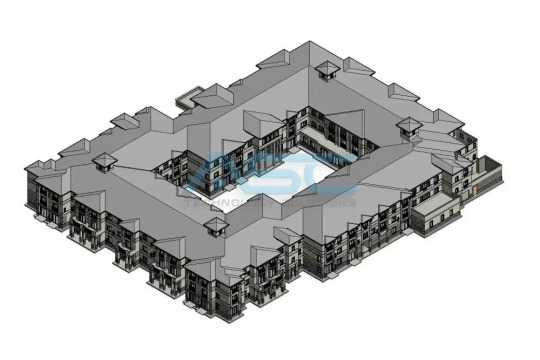
4. 4D and 5D BIM: Dimensions Beyond the Tangible
Venturing beyond the spatial confines of the 3D model, BIM extends its reach to encompass time (4D) and cost (5D) dimensions. 4D BIM unveils the integration of the project timeline, offering project managers a lens through which to envisage the construction trajectory and hone scheduling with greater precision. Meanwhile, 5D BIM introduces cost data into the mix, granting stakeholders the ability to monitor the financial pulse of the project in the moment. These dimensions furnish a comprehensive perspective of the project, enhancing decision-making and risk management.
5. Sustainability Analysis: BIM as a Pillar of Green Design
BIM further distinguishes itself as a pivotal force in fostering sustainability across the building lifecycle. Through advanced energy modeling and simulation techniques, BIM applications can scrutinize various sustainability facets from energy utilization and natural illumination to the efficacy of HVAC Duct Shop Drawing Services systems. This empowers architects and engineers to make enlightened decisions that elevate the environmental integrity of the building, with sustainability benchmarks.
6. Facility Management and Lifecycle Analysis: BIM’s Enduring Legacy
BIM’s utility stretches beyond the construction phase, infiltrating the domain of facility management. The rich tapestry of information encapsulated within a BIM model - encompassing everything from material specifications to maintenance timelines - equips facility managers with an all-encompassing toolkit for overseeing building operations, upkeep, and lifecycle assessment.
In summation, the evolution from 2D to 3D, facilitated by the embracement of BIM technologies, unfolds a multidimensional strategy for Architectural BIM Services and construction. By leveraging the techniques of parametric modeling, laser scanning, IPD, and integrating 4D and 5D BIM, stakeholders stand to reap the rewards of heightened efficiency, cost-effectiveness, and sustainability throughout the building's lifecycle. As the AEC sector continues to progress, the adoption of these methodologies will prove critical in addressing the intricate challenges posed by modern construction endeavors.
#architectural bim services#architectural 3d modeling services#architectural drafting services#bim services#hvac duct shop drawing services#architectural design
0 notes
Text
Amazing Results of Body Skin Tightening Treatments for Rejuvenation and Vitality.
Due to factors such as collagen loss, UV exposure, and lifestyle choices, the skin loosens and sags naturally as we age. Many people's confidence and sense of self-worth might suffer as a result of this. Body skin tightening treatments are an effective method of combating sagging skin and regaining a more youthful look, thanks to the development of cosmetic operations.
Adopting a Mild Methodology
Body Sculpting Treatments Saratoga often involve either no or small incisions, which is a major benefit. Skin tightening procedures employ cutting-edge technology like radiofrequency (RF), ultrasound, or lasers to promote collagen formation and tighten loose skin, as opposed to surgical solutions like facelifts or tummy tucks, which need incisions and a lengthy recovery period. Fotona 4d Laser Saratoga is the best. Patients will experience minimal if any discomfort and recovery time as a result of this.

Enhancement of Skin's Elasticity
Treatments that tighten the skin on the body do so by stimulating the creation of collagen and elastin, two proteins crucial to the health and appearance of the skin. Non Surgical Facelift Near Me Saratoga has the best results. Patients report a dramatic change in their skin's smoothness and elasticity after treatment. If your skin's condition is improved, you may find that you look and feel years younger.
Key Areas of Focus
Tightening therapies for the body can be adapted to address sagging skin anywhere on the body, including the face, neck, arms, belly, and thighs. Best Laser For Skin Tightening Saratoga is indeed the best. Because of this adaptability, patients may address their specific concerns and make sure their aesthetic goals are met.
Accurately Simulated Outcomes
Natural-looking outcomes are a major selling point of body skin tightening procedures. Face Tightening Treatment Saratoga revitalize the skin from the inside, rather than the "pulled" or fake appearance frequently associated with surgical procedures. Because of this, people won't notice any drastic changes, and you'll look like the greatest version of yourself. Body Sculpting Treatment Los Alto is used widely.

Low Potential for Harm
Body skin tightening treatments have less danger and adverse effects than surgical options. Redness, swelling, and pain are common immediately after a medical operation, although they usually go away soon. You can find Body Contouring Treatment Los Alto.
Rapid and hassle-free
Convenience is highly prized in the modern, fast-paced environment. Sessions to tighten the skin on the body normally last less than an hour, so there is little time commitment involved. Patients can get back to their regular routines quickly because they won't need general anesthesia or time off work. You can get Fotona Laser Treatment Los Alto at reasonable prices.
Conclusion
As a non-invasive, effective, and easy method of combating drooping skin and restoring young energy, body skin tightening treatments have transformed the area of cosmetic rejuvenation. Nonsurgical Fat Reduction Los Alto is actually fantastic. These operations have gained popularity as a means to improve one's look and boost one's self-esteem because of the increased skin elasticity, specialized treatment choices, and durable outcomes they provide. Talk to a doctor about the many Face Tightening Treatment Los Alto available if you're interested in reviving your skin and reaping the benefits of a more youthful appearance. Get ready to ditch your saggy skin and embrace your newfound youth and self-assurance.
0 notes
Text
BIM Engineering Consultant Servies with an Affordable price in New Zealand
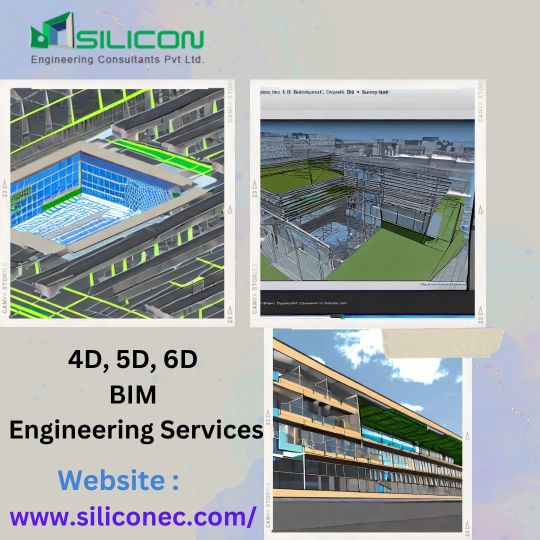
Silicon Engineering Consultants offers the best BIM Engineering Outsourcing Services. Our in-house team excels in BIM services, offering expertise in 4D BIM Services simulation for construction sequencing. We're proud to provide 5D BIM Detailing Services, delivering accurate budget and cost estimations for your project. Equipped with the latest tools and technology, we also offer seamless implementation of 6D BIM Design and Drafting Services. Trust us for successful and efficient project execution. You feel free to Contact Us for your Upcoming BIM Engineering project or any query.
Why Choose Silicon Engineering Consultants Pvt Ltd?
This is the most common question that is been arising in each one of our minds as to why to outsource the BIM project and select a BIM Outsourcing Csompany. Well, for all your such queries here is the best reasons available.
- Use of latest software like Autodesk, Revit,and Naviswork.
- Sharing the real-time update of the project.
- Dedicated team of engineers and drafters allocated for every project.
- Cost-effective and quality-oriented delivery of the work.
- 100% customer-oriented and dedicated delivery of the work.
Website :
https://www.siliconec.com/services/bim.html
#4DBIMServices#5DBIMServices#6DBIMServices#BIMCoordinationDrawings#BIMOutsourcingCompany#BIMEngineeringCADServices#BIMDesignandDraftingServices#CADServices#SiliconEC
1 note
·
View note
Photo

#BIM Training Online#Online BIM Training#BIM Courses Online#BIM Online Course#Revit Fire Protection Training#Revit 4D Simulation
0 notes
Text
NAVIS works training in Marathahalli - Cherry Institute
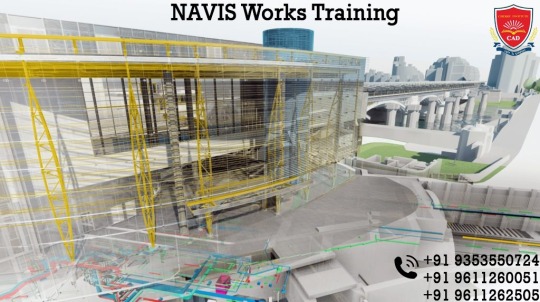
NAVIS works training in Marathahalli. Autodesk NAVIS works is widely known 3D design package launched for Microsoft Windows. It is primarily employed in the construction sector for complementing 3D design packages, such as Autodesk Revit or AutoCAD to name a few. It lets the users to open and integrate 3D models and take a look at them in real-time view with the help of various tools. Multi soft Virtual Academy offers the Navisworks training course online training for the candidates to help them learn about Navisworks Interface, Ribbons, and Indicators. Once collated data can then be used in a variety of ways ranging from simple global collaboration, through to project scheduling and even interference detection massively reducing project overruns, rework and costly construction errors. As a quantity surveyor you will be responsible for helping to estimate costs, quantities, and project timelines and providing this information to clients. You will be leasing with a variety of other teams and helping to keep a project on track. As a trainee, assistant or junior quantity surveyor, you could work towards chartered status. This would widen your career options and help you earn a higher salary. By outlining the fundamentals of Building Information Modelling (BIM), these tutorials provide clear road map for construction and design practitioners eager to learn the requirements to operate and work in this environment. Using reliable instruments for calculations and validating the results is necessary. These instruments provide accurate and precise results that help engineers to execute their construction plans without any second thoughts. Our Autodesk authorized Navisworks training allows you to combine design and construction data into a single model. Learn how to identify and resolve clash and interference problems before construction. Our Autodesk Navisworks courses explain how to use 4D and 5D simulation for controlling the project schedule, as well as how to automatically capture material quantities using Navisworks, a 3D model review software for architecture, engineering, and construction. The Autodesk Navisworks enterprise skill development program helps your team members and stakeholders in reviewing integrated models and data for better control over project outcomes. If you are interested for demo pls contact us +91 8296784431.
0 notes
Text
Revizto materials not showing

#Revizto materials not showing software
The actual process of transforming one file to another is not particularly complicated – if we’re trying to export Revit to Navisworks, for example. And there is such a way – or even two ways to do it. Since the same company sells both Revit and Navisworks, you’d expect that there’ll be a way for those applications to cooperate in some way. It works with many different formats, helps with clash detection, can simulate many different situations to predict potentially unwanted outcomes, and much more than that.Īs we’ve said above, the main difference between Revit and Navisworks is that Revit is used to create various models, and Navisworks is used to put all of those models as a single project within a single file and make sure they don’t interfere with each other. Since Revit supports 4D BIM, it can also help with planning and tracking the project throughout its entire lifecycle, from the beginning to the very end.Īutodesk Navisworks, on the other hand, is a project review solution that can be used to combine data from different sources into one model of a project as the single source of truth for the team. It is possible to annotate the model and access a specific model using a special database.
#Revizto materials not showing software
IntroductionĪutodesk Revit is a BIM (Building Information Modeling) software that allows its users to design projects and their separate components in three dimensions. There’s also the fact that their purpose is slightly different from one another. First of all, Revit and Navisworks are not mutually exclusive and can often be used together in some cases. Even though the topic of exporting files from Revit to Navisworks is highly specific, it’s still essential to start with going over the definition of the two.

0 notes
Text
Taking BIM model audits to the next level with iFieldSmart Technologies.
There are various benefits of Building Information Modeling (BIM); in an MEP department, the majority of the projects are modeled in Revit. Often, other project trades work with Architects who are not designing a building in 3D; in those cases, 2D floor plans are under played, and an appropriate offset is set for each level in Revit.

Then, MEP systems can be built in 3D. There are various advantages of this workflow, the most impactful being visualization that comes with modeling in 3D. To summarize, Autodesk Revit delivers a myriad of tools that allow visualizing structure, ductwork, walls, piping, etc. from different user perspectives. Revit can also be leveraged to gain a more realistic view for presentation purposes.
While all of these tools and features are useful, they are slow in the case of Revit. This is where Navisworks can help save time and money through quick renders, 4D schedules, clash-detection, and more.
Navisworks helps designers show 3D models through reduced constraints & systems; this is what slows down Revit. For example, one can export a view from Revit, to Navisworks, and the result is a visual of every 3D object, minus the large database of parameters and properties that come along with these objects. Not all, but some of that information is taken by Navisworks, which includes object names, classification (door, duct, window, etc.), and the level of detail of development they are modeled on.
Navisworks retain material properties for appearance and other information like data for constraints, schedules, etc. is cut out. The result is a 3D model of the building that can be easily and quickly manipulated for visual goals. Once a 3D model is exported to Navisworks, it is possible to any building component, view its modeling details, change the color, transparency, etc.
Navisworks uses the selection tree to change the classification of objects at once. For example, designers or modelers can hide an entire floor, or the brightness of the entire structure can be altered. Aside from making images pretty, this is particularly applicable for complex construction where coordination is critical, and it provides an excellent check for designers and contractors.
Navisworks Manage includes another tool called “Clash Detective” that identifies collisions in 3D geometry within the model. The simplicity at which one can visualize a model in Navisworks helps identify quick collisions. With both programs running in unison, designers can make modifications to a Revit model as part of the quality control process.
Navisworks enables users to select specific objects to look for clashes, for example, structural columns and ducts. Designers and modelers can even identify objects and set tolerances that help in setting certain clearances for equipment. It also helps ensure adequate space is kept for accessibility. By utilizing these visual aids through Navisworks, clients can improve design to save on cost and money with improved coordination.
It is important to keep in mind that “ A fully coordinated model does not mean clash-free”, a fully coordinated design indicates clashes were detected and reviewed, but not necessarily resolved. For example, a valid penetration that is detected and reviewed is not resolved as a few holes can be drilled onsite for pipes to go through.
Navisworks Simulate and Navisworks Manage are two versions of Navisworks that deliver advanced tools for simulation, and comprehensive project review for analysis, coordination, and communication. The file types used in Navisworks can be classified as –
NWC – cache file that contains all the geometry and setup-related information during an export the file is smaller than the original file
NWF – also called the Navisworks File Set, holds all the NWC files that are appended to the project can be accessed in Navisworks Manage
NWD – also called the Navisworks Document, it holds the complete geometry and other information added in Navisworks like Comments, Timeliner Simulation, saved Viewpoints, and Search Setsz
Outcomes of a poor clash strategy.
Acting in a planned and defined manner is key, and it applies to clash detection as well. It is possible to clash detect everything, or the entire model against another, however, it is an ineffective approach if the end goal is a well-coordinated model.
· Results in thousands of clashes
· Loss of model confidence
· Wasted time and effort in identifying phantom clashes
Clash detection requires strategies that include questions like - what are we trying to achieve? Isolating clashes that need resolution, and eliminating phantom clashes.
Clash Detection Matrix.
A Clash Matrix is an efficient practice to plan your clash tests and create what is commonly termed as a Clash Matrix that includes a combination of trades and priorities based on a construction deliverable or schedule. The chronology of clash tests is crucial in reducing changes between model updates.
Viewpoints.
Viewpoints are an important feature in Navisworks as they allow users to save and recall different settings related to model views and settings for navigation. It also gives users the option to save item visibility and appearance overrides within viewpoints.
Navigating viewpoints helps isolate the clash items making it easier to focus on them. It also helps adjust the viewing context, visually identify clashes in the model, and transition between various clashes. Viewpoints of the entire project or select trades help document new clashes between trades.
For example, when documenting an issue between Mechanical and Structure, users can click on saved viewpoints, and then click back on the issue in the Clash Detective. If you’ve navigated away from the clash, and cannot locate it in the scene view, then you can reset the viewpoint to focus on the clash viewpoint again.
Project collaboration software like iFBIM enables project stakeholders to assign clashes with a digital signature and leverage a detailed clash management log with the option to download it.
Turning Navisworks Clashes to Viewpoints
Steps to create Clash Viewpoints
· Use clash detective in Navisworks
· Using the Add Test Button to add a test scenario
· In the select tab, choose Selection A and Selection B to run clash detection, and run the test
· Running the test helps you view your clashes
· Users can save viewpoints manually or automatically
· If you’re manually optimizing your clash viewpoints, it is important to navigate to a viewing angle that can make sense in VR. Avoid creating viewpoints that are obstructed by dimmed or hidden geometry. It is a good practice to set the toggle on for “Hide Other” to view the obstructed viewpoint
Write a report as a viewpoint that can be sent to the client
Use iFBIM CVP-sync to export and import clashes and viewpoint data from the iFBIM platform, and record clash clips for future review.
The Clash View Point Manager helps designers and modelers organize, extend, and speed up the clash test process, and leverage various tools viz. Find and Assign to Trade, Grouping, Rename Clashes & Viewpoints, Group similar trade clashes, etc.
AEC firms and teams can leverage significant time reduction to generate a cost estimate, sync 50 clashes/min, and save on 75% workforce in the preparation of building plans with iFBIM.
Conclusion
Here at iFieldSmart Technologies, we believe in being highly visual. We are also at the forefront of BIM adoption through technology automation to leverage high efficiency. By using and integrating visual technology such as Navisworks and iFBIM, we’re able to improve client designs for visual purposes through quick and easy manipulation, identification, auditing, analysis, and more
For more information: +17034688575
Visit us: -www.ifieldsmart.com/
#ifieldsmart#Task Management#Punch lists#RFI management#Preconstruction#BIM Collaboration#Construction project tracking
0 notes
Link
0 notes
Text
BIM Training Courses – Kickstart your BIM and Revit journey in 2021
BIM training courses are the latest paradigm in the construction space.
Building Information Modeling is in huge demand in today’s time, especially after the Coronavirus pandemic outbreak. It assists engineers, designers, architects, and other stakeholders in enhancing work, building performance, and saving time and money over the project timeline.
So, if you ever find yourself gazing and admiring other architect’s piece of art, it is time that you kick start your career with some relevant construction management courses from BIM coaching in Hyderabad. By kick-starting your career with TechnoStruct Academy, you can utilize your time learning and upgrading your skills and knowledge from the comfort of your home!
TechnoStruct Academy is the training division of renowned US Engineering & Technology BIM firm, called TechnoStruct. It has ventured into providing BIM training courses to educate and prepare students in the field of BIM, AutoCAD, Revit, and NAVISWORK while also providing relevant opportunities for learners to work in the construction industry.
TechnoStruct Academy offers a range of specialized courses in Building Information Modeling to help students pick the right subject as per their preference and capabilities. Here are the top courses:
BIM Ready Complete – International Certification in BIM Modeling & Coordination
BIM Ready+ – International Post-Graduate Certification in BIM Management
BIM Ready (Architecture) – International Certification in BIM Architecture
BIM Ready (MEP) – International Certification in BIM MEP
BIM Ready (Structure) – International Certification in BIM Structure
CAD Ready – International Certification in CAD Drafting & Documentation
What will I learn in BIM Ready Complete?
BIM Ready Complete program is designed for students and professionals from Engineering and Architecture background. This module extends the skills and competencies gained in the BIM/CAD architecture module. It enables you to prepare, modify, and enhance detailed designs using BIM as the principal design/development platform. As a part of this course, the learner will have to attend 60-hours of e-live classes and 60-hours of practical learning and will have to work on live projects. Besides the sessions, the learner will work on live US-based projects, the opportunity to work under BIM professionals for a month, and placement assistance in MNCs.
What you’ll learn?
In this course, you’ll learn the basics of BIM Architecture, BIM Structure, BIM MEP (Mechanical, Electrical, Plumbing, and Fire Fighting & All Building Services), parametric modeling, learn to draw shop drawings, 4D, 5D, 6D modeling, and applications, BIM and project collaboration, and also learn to create virtual reality enabled models (VR).
You’ll also learn to create digital information such as images, drawings, rendered images, rendered videos, walk-throughs, and animations using software like 3DS Max, Revit Live & Enscape.
Software you’ll learn: AUTO CAD 2D & 3D, AUTO CAD MEP, REVIT (Arch/Stru/MEP), DYNAMO, NAVISWORKS, Autodesk BIM 360, Scan to BIM, ENSCAPE, REVIT Live, 3DS Max.
What will I learn in BIM Ready+ Course?
BIM Ready+ is an advanced course designed for professionals looking to join global companies and become leaders in the field of BIM. The course structure offers participants the methodology, tools, and competencies necessary to prepare for different profiles such as BIM Managers, Implementers, and Consultants. The students will learn about working on BIM and its practices while pursuing BIM Ready+ courses, will get hands-on experience working on US-based live projects, the opportunity to intern under BIM professionals from across the globe, and placement assistance in MNCs. The course will include 90-hours of e-live classes and 90-hours of practical learning.
What you’ll learn?
Students will develop an in-depth understanding of and not limited to Parametric Modeling, 4D-simulation, 5D-Cost Estimation of the planned construction process, visualization, and animation. Participants learn to examine the issues and problems that are inhibiting the widespread application of time-lining and 4D simulation technologies in the industry.
Software you’ll learn: Microsoft Project (MSP), AUTO CAD, REVIT, DYNAMO, NAVISWORKS, Autodesk BIM 360, Scan to BIM, and more.
What will I learn in BIM Ready (Structure)?
In this course you’ll learn about BIM theoretical & practical framework, procurement and collaborative aspects of design and technical information exchange, affecting the design of simple to more complex buildings. You’ll also learn the technological, regulatory and professional context of BIM within the architecture and construction industry, generation of shop drawings, spool drawings and construction drawings with accurate detailing, and will be able to perform Structural Analysis of all the structural components in the building.
Software you’ll learn: AUTO CAD 2D & 3D, STAAD Pro, REVIT Structure, DYNAMO, NAVISWORKS, Autodesk BIM 360, and Scan to BIM.
What will I learn in BIM Ready (Architecture)?
You will get to learn BIM’s theoretical & practical framework, procurement and collaborative aspects of design and technical information exchange, affecting the design of simple to more complex buildings. This module extends the skills and competencies gained in the BIM/CAD architecture module and enable you to prepare, modify and enhance detailed designs using BIM as the principal design/development platform.
Software you’ll learn: AUTO CAD 2D & 3D, REVIT (Architecture), DYNAMO, NAVISWORKS, Autodesk BIM 360, Scan to BIM, Enscape, REVIT Live, and 3DS Max.
What will I learn in BIM Ready (MEP)?
In this course you’ll learn the basics of BIM, how to generate shop drawings, spool drawings and construction drawings with accurate detailing, Basics of H.V.A.C- Heating Ventilation and Air conditioning design, Basics of Plumbing – Drainage & water supply design, Basics of Electrical design and complete 3D modelling, Basics of Fire Fighting services design, Introduction to visual Programming, and 4D, 5D, 6D modeling and applications.
This module extends the skills and competencies gained in the BIM/CAD architecture module and enable you to prepare, modify and enhance detailed designs using BIM as the principal design/development platform.
Software you’ll learn: AUTO CAD 2D & 3D, AUTO CAD MEP, REVIT MEP, DYNAMO, NAVISWORKS, Autodesk BIM 360, and Scan to BIM.
What will I learn in CAD Ready?
Students will develop an in-depth understanding of and not limited to Parametric Modeling, 4D-simulation, 5D-Cost Estimation of the planned construction process, visualization and animation. Learners will also learn to examine the issues and problems that are inhibiting the widespread application of time-lining and 4D simulation technologies in the industry.
Software you’ll learn: AUTO CAD 2D & 3D, and AUTO CAD MEP.
Whether you are a budding AEC engineer, designer, student, or a working professional who is looking to take your skills to the next level, you can join TechnoStruct Academy’s latest BIM Management courses to upgrade your skills and get ahead of the competition.
To find more about these courses, visit: www.tibcam.com
New batches starting from January 15th, 2021.
Give your career the kick start it needs by enrolling in the BIM Ready+ course today.
1 note
·
View note
Link
RMI offers BIM services covering 3D BIM modelling, Clash detection, 4D scheduling and simulation up to 5D cost estimation services and BIM FM solutions.
#BIM Consulting#BIM Consulting Services#BIM Modeling Services#BIM Service Providers#BIM Services#Revit BIM Services#Architectural BIM Services
1 note
·
View note
